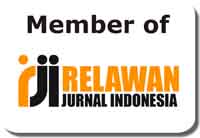Hard-of-Hearing (HH) Students’ Perceptions of Multimodal EFL Learning
Abstract
Keywords
Full Text:
PDFReferences
Bao, X. (2017). Application of Multimodality to Teaching Reading. English Language and Literature Studies, 7(3), 78. https://doi.org/10.5539/ells.v7n3p78
Bari, S., Yasin, M. H. M., & Ramli, M. M. (2013). Computer-assisted teaching and learning among special education teachers. Asian Social Science, 9(16 SPL), 87–94. https://doi.org/10.5539/ass.v9n16p87
Chong A. O., & Shaffe Mohd Daud. (2015). TPACK : A missing piece of the technology puzzle among special. Graduate Research In Education (Greduc) 2015 Seminar, May 2016, 54–59.
Csizér, K., & Kontra, E. H. (2020). Foreign Language Learning Characteristics of Deaf and Severely Hard-of-Hearing Students. Modern Language Journal, 104(1), 233–249. https://doi.org/10.1111/modl.12630
Darrington, B., & Dousay, T. (2014). Using Multimodal Writing to Motivate Struggling Students to Write. TechTrends, 59(6), 29–34. https://doi.org/10.1007/s11528-015-0901-7
Entwistle, N. J., & Walker, P. (2002). Strategic alertness and expanded awareness within sophisticated conceptions of teaching. In N. Hativa & P. Goodyear (Eds.), Teacher thinking, beliefs and knowledge in higher education (pp. 15-40). Dordrecht: Kluwer.
Evans, C. J. (2004). Literacy development in deaf students: Case studies in bilingual teaching and learning. American Annals of the Deaf, 149 (1), 17-27. doi:10.1353/aad.2004.0011
Ghazi-Saidi, L., & Ansaldo, A. I. (2017). Second language word learning through repetition and imitation: Functional networks as a function of learning phase and language distance. Frontiers in Human Neuroscience, 11(September), 1–13. https://doi.org/10.3389/fnhum.2017.00463
Hsieh, H. F., & Shannon, S. E. (2005). Three approaches to qualitative content analysis. Qualitative Health Research, 15(9), 1277–1288. https://doi.org/10.1177/1049732305276687
Jewitt, C. (2008). Multimodality and literacy in school classrooms. Review of Research in Education, 32, 241–267. https://doi.org/10.3102%2F0091732X07310586
Joshi, K.R. (2011). Learner Perceptions and Teacher Beliefs about Learner Autonomy in Language Learning. Journal of NELTA, 16 , 13-29. https://doi.org/10.3126/nelta.v16i1-2.6126
Khan, I. A., & Asif, F. (2017) Relevance of Differentiated Instruction in Special Education for Anxiety Affected Learners: A Theoretical Analysis of Learning Problems and Some Strategies. European Journal of Special Education Research. 2(4) http://doi.org/10.5281/zenodo.1208276
Kontra, E. H., Csizér, K., & Piniel, K. (2015). The challenge for Deaf and hard-of-hearing students to learn foreign languages in special needs schools. European Journal of Special Needs Education, 30(2), 141–155. https://doi.org/10.1080/08856257.2014.986905
Kontra, E. H. (2020). The L2 motivation of learners with special educational needs. In M. Lamb, K. Csizér, A. Henry, & S. Ryan (Eds.), Handbook of motivation for language learning (pp. 495–513). Basingstoke, UK: Palgrave.
Kotrlik, J. W., & Redmann, D. H. (2009). Analysis of Teachers’ Adoption of Technology for Use in Instruction in Seven Career and Technical Education Programs. Career and Technical Education Research, 34(1), 47–77. https://doi.org/10.5328/cter34.1.47
Kress, G. (2003). Literacy in the new media age. London: Routledge.
Mohd Yusof, A., Daniel, E. G. S., Low, W. Y., & Ab. Aziz, K. (2014). Teachers perception of mobile edutainment for special needs learners: The Malaysian case. International Journal of Inclusive Education, 18(12), 1237–1246. https://doi.org/10.1080/13603116.2014.885595
Nasim, O., Shah Fahad, M., Ahmad, K., Khan, S., & Shah, D. (2019). Lip reading as reinforcement for speech reproduction in deaf children with hearing aids. October. www.jms.rmi.edu.pk
Nikolaraizi, M., Vekiri, I., & Easterbrooks, S. R. (2012). Investigating deaf students’ use of visual multimedia resources in reading comprehension. American Annals of the Deaf, 157(5), 458–473. https://doi.org/10.1353/aad.2013.0007
Sankey, M., Birch, D., & Gardiner, M. (2010). Engaging students through multimodal learning environments: The journey continues. ASCILITE 2010 - The Australasian Society for Computers in Learning in Tertiary Education, Bradwell 2009, 852–863.
Smith, S., & Basham, J. (2014). Designing online learning opportunities for students with disabilities. Teaching Exceptional Children, 46(5), 127-137. https://doi.org/10.1177/0040059914530102
Vaughn, S., & Wanzek, J. (2014). Intensive Interventions in Reading for Students with Reading Disabilities: Meaningful Impacts. Learning Disabilities Research, and Practice. 29(2). DOI: 10.1111/ldrp.12031
Yaman, F., Dönmez, O., Avci, E., & Yurdakul, I. K. (2016). Integrating mobile applications into hearing impaired children's literacy instruction. Egitim ve Bilim, 41(188), 153–174. https://doi.org/10.15390/EB.2016.6687
Yin, R. K. (2017). Designing Case Studies. In Case Study Research and Applications: Design and Methods.
Zhao, Y., Pugh, K., Sheldon, S., & Byers, J. (2002). Conditions for classroom teacher innovations. Teachers College Record, 104(3), 842–515. https://www.rtsd.org/cms/lib/PA01000218/Centricity/Domain/96/Conditions for Classroom Tech.pdf
DOI: http://dx.doi.org/10.31332/lkw.v7i1.2449
Copyright (c) 2021 Nur Arifah Drajati, Bunga Ikasari, Rizka Junhita

This work is licensed under a Creative Commons Attribution-ShareAlike 4.0 International License.
Langkawi: Journal of The Association for Arabic and English indexed by:


















.png)
.png)

.png)
2.png)








